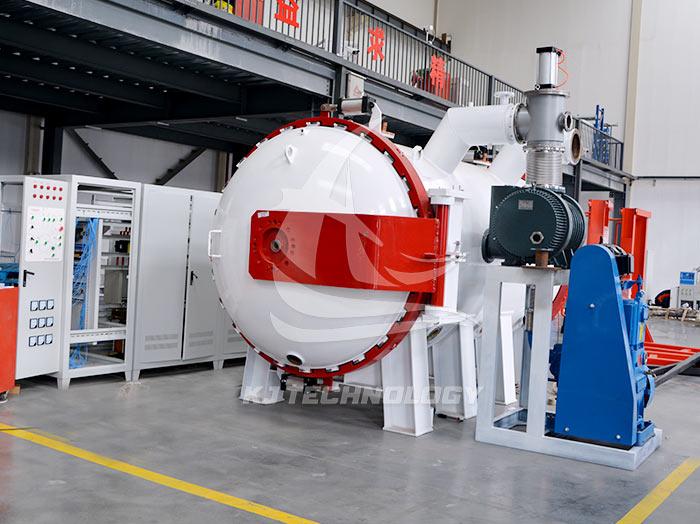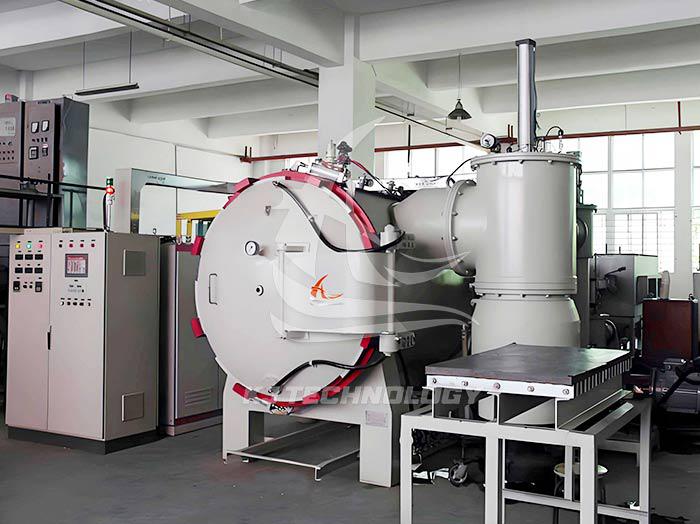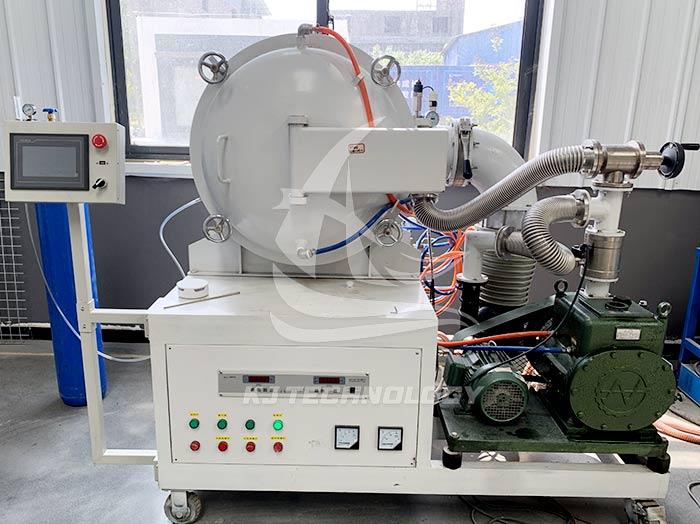What should be noted during the brazing process of a vacuum heat treatment furnace?
 05-19-2025 Author: KJ technology
05-19-2025 Author: KJ technology
When brazing in a vacuum heat treatment furnace, the following key points should be noted:
Workpiece cleaning and gap control: Before brazing, the workpiece needs to be carefully cleaned to remove oil stains and oxide films, ensuring that the interface assembly gap is between 0.01 and 0.1 millimeters to ensure uniform distribution of brazing material and sufficient wetting of the base material.
Solder coating and preheating treatment: Apply the solder evenly and appropriately to the interface of the workpiece, ensuring complete coverage of the interface area. Preheat the workpiece after placing it in the vacuum furnace to improve the flowability of the brazing material and reduce welding stress, thereby enhancing welding strength and reliability.
Vacuum degree and atmosphere control: During the welding process, close the vacuum hood and start vacuum treatment to lower the internal pressure of the workpiece below atmospheric pressure, eliminate oxygen and other impurities, and prevent high-temperature oxidation. According to the material requirements, control the vacuum degree within the range of 10 ⁻³ to 10 ⁻⁵ pallets.
Temperature and time control: Accurately adjust the heating temperature and time according to material and process requirements. For example, aluminum components need to be heated to 575 ° C to 590 ° C, and nickel based alloys need to be preheated to 920 ° C to 980 ° C. Temperature and time should be controlled reasonably to ensure that the brazing material fully wets the base material and completes diffusion, avoiding material performance degradation.
Heating and cooling rate: The heating rate should not be too fast to avoid a sharp decrease in vacuum degree or deformation of the workpiece. When cooling, it is necessary to control the cooling rate. For example, aluminum and aluminum alloys can choose natural furnace cooling or forced inflation cooling, but inflation should be carried out below 400 ° C to prevent cracking.
Safe operation and equipment maintenance: Operators must be familiar with the structure and performance of the equipment, wear protective equipment, and are strictly prohibited from performing maintenance while the equipment is in operation. Regularly inspect the vacuum system, heating system, cooling system, etc. of the equipment to ensure normal operation.
Process parameter monitoring and adjustment: Use qualified and effective monitoring instruments to measure and control parameters such as heating temperature, time, and vacuum degree. Pay attention to the placement of the thermocouple and adjust the temperature parameters if necessary to compensate for the actual temperature difference of the workpiece.
Post processing and quality inspection: After brazing, according to technical requirements, remove flux residue, flow inhibitor, and perform post weld heat treatment. Check the cleanliness of the workpiece to ensure that there are no residual impurities affecting the welding quality. Conduct quality inspections, such as density testing, metallographic analysis, performance testing, etc., to ensure that the welded joints meet the standards.








